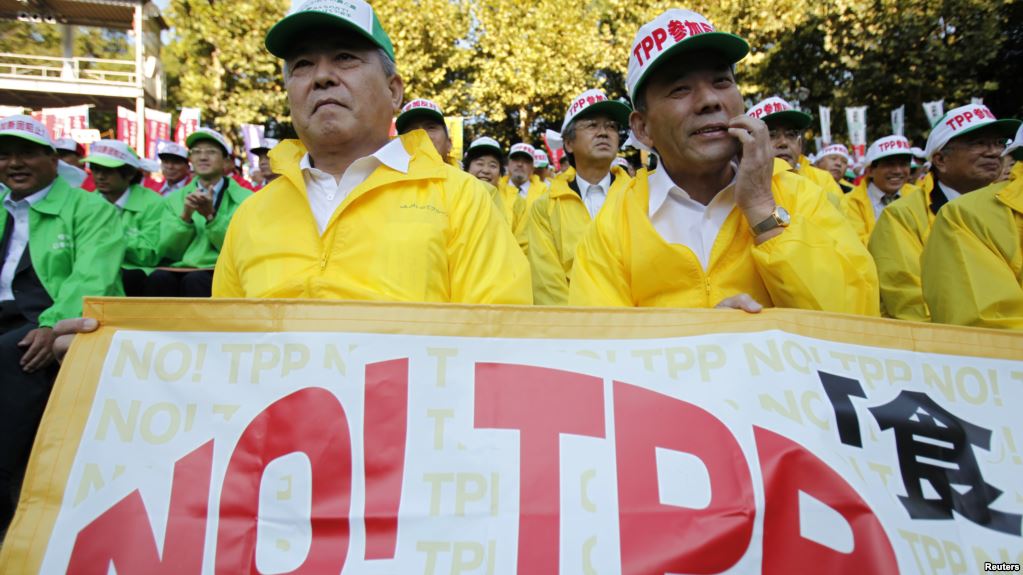TPP negotiators working to revise accord after US pullout
Kyodo | 21 September 2017
TPP negotiators working to revise accord after US pullout
The chief negotiators of the 11 remaining countries of the Trans-Pacific Partnership worked Thursday to narrow down proposed freezes to parts of the original accord following the U.S. withdrawal from the free trade deal.
The 11 countries are seeking to reach a new agreement by November to implement the pact but member countries have made dozens of proposals for freezes to the current deal, in particular clauses introduced at U.S. requests.
Japan is seeking to make minimal changes to the current agreement, in hope the United States may eventually return to the TPP, Japanese sources said.
At the two-day talks in Tokyo through Friday, three working groups on legal, intellectual property and other issues are assessing various requests for freezes, such as over a clause to preserve copyrights and trademarks.
"I hope in this meeting...we can take a big step forward towards the Asia-Pacific Economic Cooperation summit" in Vietnam in November, Japanese chief negotiator Kazuyoshi Umemoto said at the outset of the meeting, which was open to the media.
"I would like to once again emphasize the crucial importance of establishing...a free, multilateral trade system based upon high-standard rules in the Asia-Pacific, which really fits the 21st century," Umemoto said.
"It is also important to continue to pursue the possibility of the United States coming back to this framework and for that purpose it’s very important to implement the TPP as early as possible," he added.
The talks are expected to cover proposals such as a clause to preserve copyrights and trademarks for 70 years after creators die and a clause that calls on members to open public procurement and works to foreign companies.
Vietnam, which accepted stricter regulations in return for access to the huge U.S. market, has proposed to amend the clause on rules of origin in exports of fabrics, the sources said.
Another issue that needs to be addressed is a clause stating that the TPP pact can only come into force after six countries, accounting for 85 percent or more of the original 12 signatories’ combined gross domestic product, complete domestic procedures. So far, just Japan and New Zealand have ratified the free trade deal.
As the United States alone represents more than 60 percent of the initial members’ GDP, it is impossible for the pact to come into effect under the present terms.
The outlook for the TPP has been clouded since U.S. President Donald Trump announced the country was pulling out shortly after he took office in January, saying the multilateral pact hurts American jobs and that he prefers bilateral trade negotiations.
The TPP was signed in February 2016 by Australia, Brunei, Canada, Chile, Japan, Malaysia, Mexico, New Zealand, Peru, Singapore, the United States and Vietnam — covering around 40 percent of the global economy.






